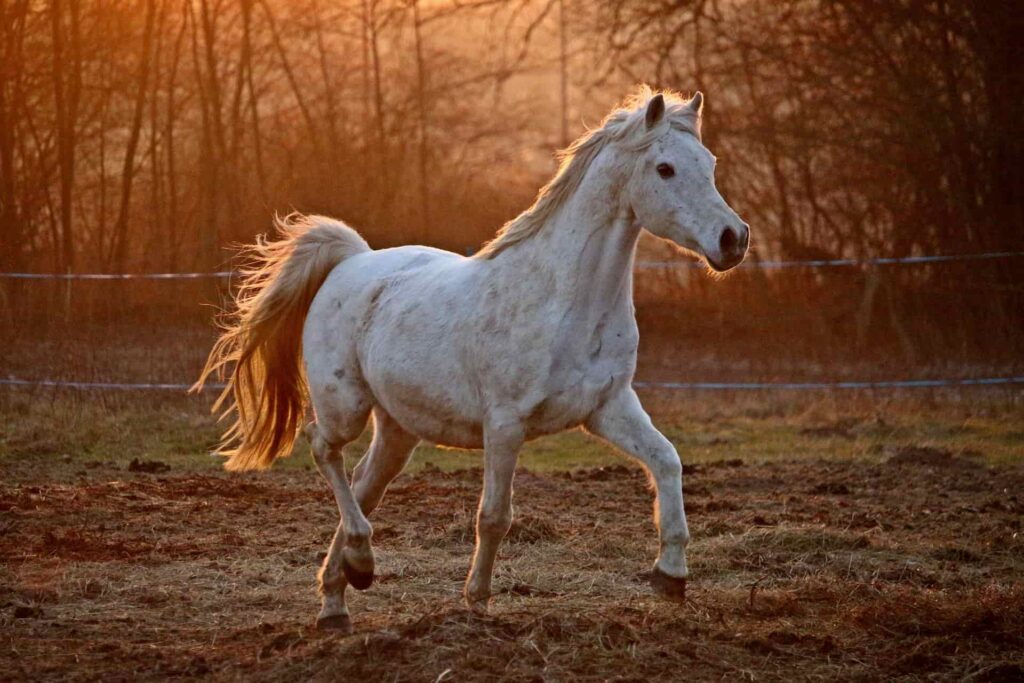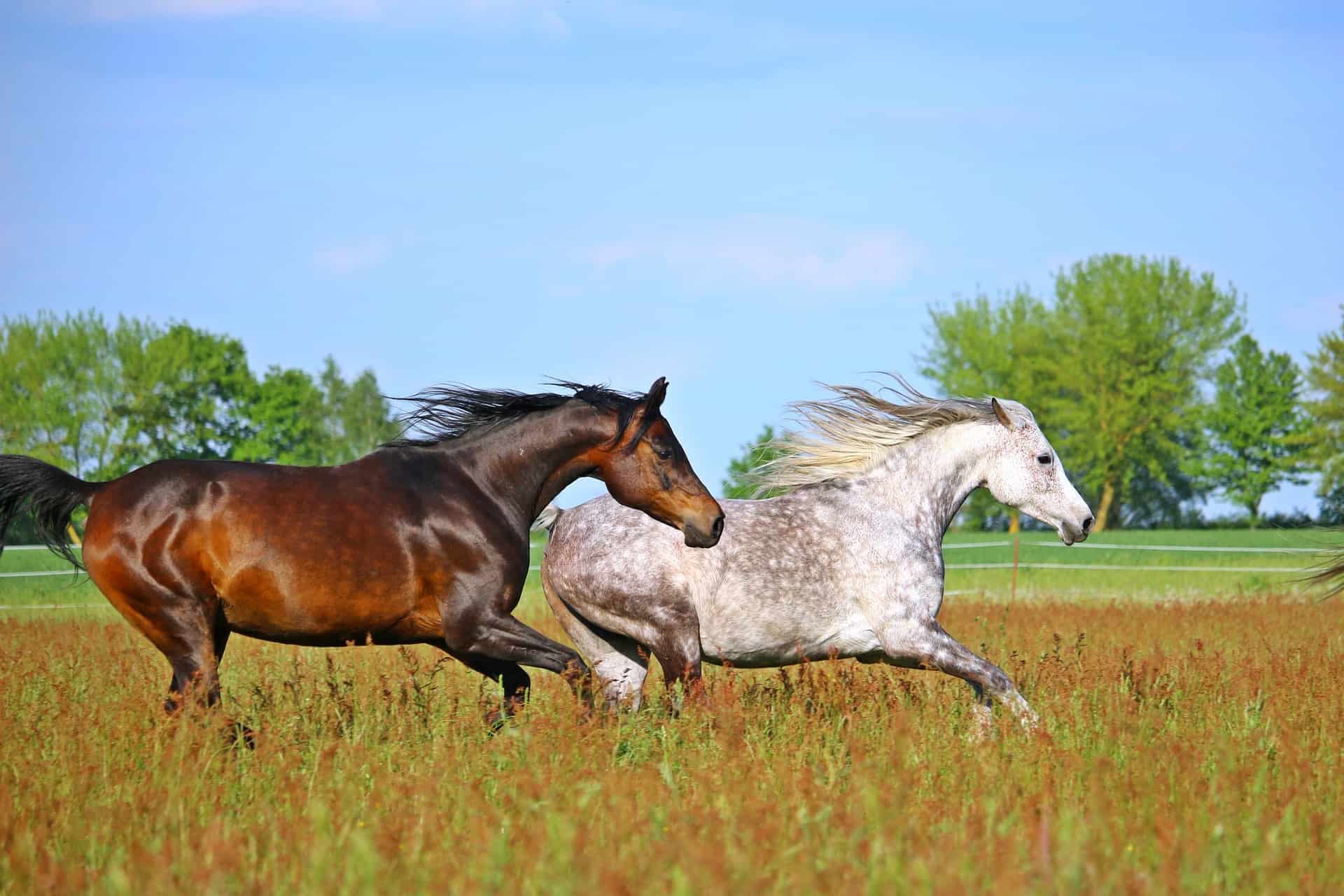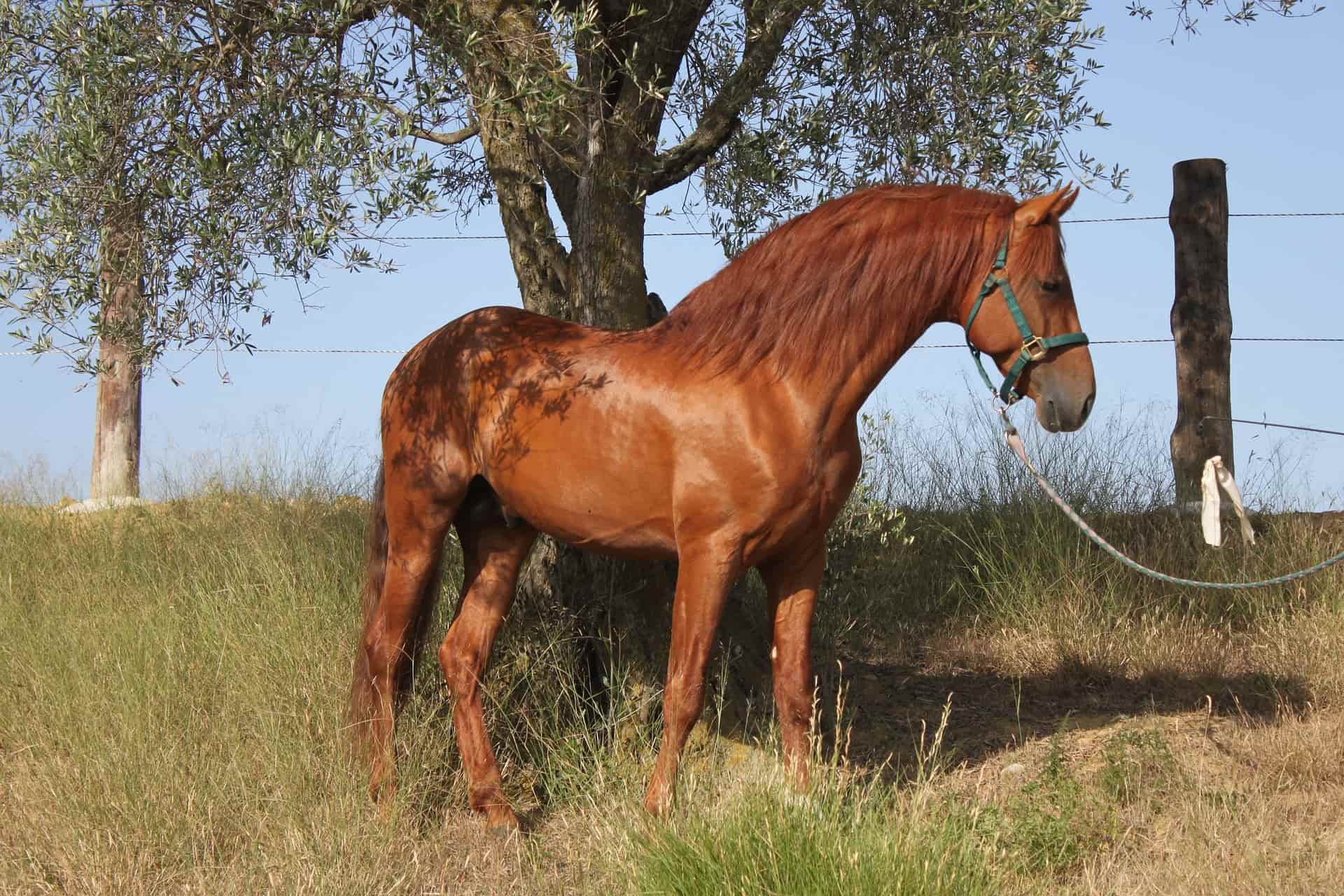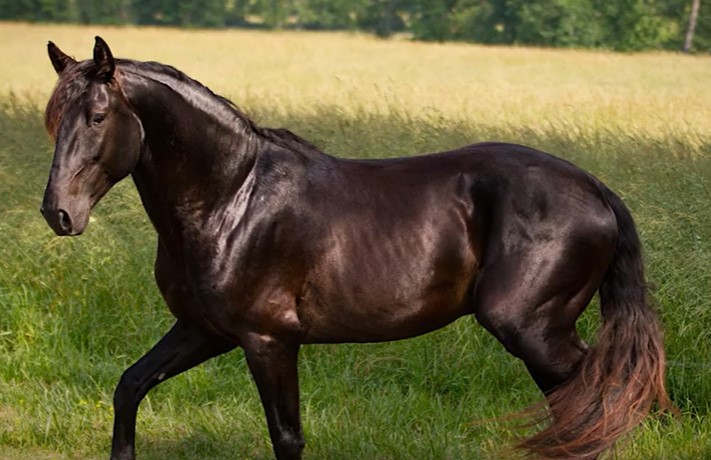The Arabian breed is compact – a factor that makes it an excellent riding horse for kids and teens. However, there’s more to the Arabian horse than just its relatively small stature. Since it also has a stocky and powerful build, it’s used in many equine activities; from show jumping to endurance riding and more.
Have you been yearning to learn more about this horse breed? Here are 20 interesting Arabian horse facts that you should know.
Fun Facts about Arabian Horses
1. One of the oldest horses
Although they have an average horse lifespan, did you know that Arabians are among the oldest horse breeds in the world? That’s right. Turns out that their history dates back at least 4,500 years ago.
Sadly, no one knows for sure the specific origin of the Arabian breed. However, it’s rumored that modern Arabians could be the offspring of the ancient Proto-Arabian”. Specifically, images of horses that resemble this breed have been found in inscriptions and paintings of the Arabian Peninsula.
Suggested Read: 13 Most Famous Horse Paintings of All Time
These and other artifacts prove that Arabian horses have provided companionship to humans for thousands of years.
2. A lot of modern horse breeds have Arabian bloodlines
As one of the most ancient horses, the Arabian has had a massive impact in the development of other breeds.
If there was even a slight chance of tracking the history of pedigrees, we’d probably discover that the majority have Arabian blood coursing through their veins. The Godolphin Arabian is a good case in point. This horse served as a foundation sire for the Thoroughbred (also read: 16 fun facts about the Thorouhbred).
Thoroughbreds aren’t the only breed the Arabian helped create. As one of the most influential horse breeds, it played a big role in the development of the following:
- Quarter Horses
- American Saddlebred
- Morgan
- Anglo-arabian
- Welsh Pony and Cob
In some areas, the crossbreeding of the Arabian has even resulted in a distinct breed. For example, the Quarab is a mixture of the Arabian and Quarter horse. Morab stems from breeding the Morgan and the Arabian while Welara is part Arabian part Welsh Pony. Check out our guide featuring the most beautiful mixed breed horses.
3. The Arabian horse breed almost became extinct in the early 1900s
Deadly wars that occurred throughout history impacted the development of horse breeds, and the Arabian was no exception.
Both the Russian Revolution and World War I caused a lot of breeding programs to come to a complete halt. It’s estimated that there were only 17 purebred Arabians throughout Europe by 1932.
Following World War II that took place between 1939 and 1945, more Arabian horses were lost. The situation was so dire that only three breeding programs survived this war.
4. The Arabian breed was revived after the end of the Cold War
Arabians were a very rare breed in the United States. They only started gaining prominence once the Soviet Union fell apart, some time around 1991. So the few Arabian horses that had been left in the U.S. were predominantly half and quarter breed horses.
It wasn’t until the 1990s that breeding programs in the West began being restored. The efforts to restore this horse breed were reinforced by the formation of the World Arabian Horse Association.
Interestingly, this organization was founded about the same time as the European Union. Today, Arabian horses are traded globally without any restrictions.
5. The Arabian horse is prone to several genetic disorders
Are you thinking of adopting an Arabian horse breed? If you are, then you’ll want to familiarize yourself with the genetic disorders it’s likely to suffer from.
There are 7 main conditions that this breed is susceptible to. Unfortunately, this number is much higher than the average for modern horses.
Examples of these genetic disorders are lavender foal syndrome, cerebellar abiotrophy, Wobbler syndrome and juvenile epilepsy.
6. Arabian horses have been showcased in literature and film
Another little known fact about this horse breed is that it’s been featured in several films and works of art.
For years, Arabian horses have provided inspiration to artists and filmmakers alike. This is not too surprising considering its elegance and nobility. Examples of films where these horses were showcased include Hidalgo (2004) and Young Black Stallion of 2003.
7. The Arabian mare was more highly prized than the Arabian stallion
The Bedouins- who are considered the native inhabitants of the Arabian Peninsula – preferred female to male horses. The reason for this is that female horses are more docile- a trait that makes them easier to handle.
This feature came in handy when Bedouins needed war horses. A quieter horse made it easier for them to sneak into their enemies’ territory and attack.

8. Arabians are a popular breed
Another thing you probably didn’t know is that Arabians are one of the most popular horse breeds worldwide. Well trained Arabians can also be very expensive horses to purchase.
Research carried out by the Arabian Horse Association revealed that the number of registered Arabian horses is 1 million+.
More than half of these are found in the United States. There’s also a significant portion of its population living in Canada. Other organizations like the Arab Horse Society share similar statistics.
Important to note though is that Arabian horses differ depending on where they originated from. This brings me to my next point.
9. There are six varieties of Arabian horses
Did you know that there are different varieties of the Arabian horse? Six to be exact. These are:
- Crabbet Arabian – this horse was developed in Crabbet, England.
- Egyptian Arabian – these Arabian horses aren’t very common, perhaps because they’re purebred.
- Spanish Arabian – comprising less than 1% of all Arabians, they’re the rarest type.
- Polish Arabian – the Polish managed to capture several Arabian horses from their invaders. They were so fascinated by their beauty that they decided to start a breeding program of their own; hence, the development of Polish Arabians.
- Russian Arabian – this type is not a purebred as it often comprises bloodlines of the Crabbet and Polish varieties.
- Shagya Arabian – this strain is known for having mixed parentage
10. The Arabian horse is the oldest purebred horse
In case this term sounds alien, purebred means that an animal has both of its parents belonging to the same breed. Thus, the Arabian wears the crown for the oldest purebred horse.
11. American Arabians became extinct following the civil war
In the mid-1800s, U.S. natives made an attempt to breed Arabians so as to restore them. In fact, an individual called Keene Richard was known to specifically breed Arabians. But when the civil war happened, he lost all his horses.
This marked the end of any purebred descendants that ever existed. Thankfully, the breed was restored many years later by breeding imported Arabians with native varieties.
12. Arabian horses were introduced into Europe during the war period
Legend has it that the first horses that had Arabian genes arrived in Europe in the 1000s when they were brought through war.
European armies used to attack Palestine. Anytime they emerged victorious, they’d take home Arabian horses as some sort of reward. Gradually, Arabians became the go-to breed for war where they served as light cavalry horses.
13. Arabians are among the most versatile horse breeds in the world
One key reason why Arabian horses are so popular is their versatility. This is the kind of breed that excels in every equine activity it participates in. It’s considered one of the best barrel racing horse breeds and trail riding horse breeds, just to name a few.
Important to note though is that not all Arabians are the same. Some Arabians have broad and stocky bodies- traits that make them suitable for western disciplines like pleasure riding, reining. Such horses are also perfect for ranch work.
However, there are other Arabians that have lean bodies. These horses have better balance and more muscling, making them fit for flat racing and endurance riding. They also excel in activities like show jumping making them superb dressage horses.

14. There are racing events dedicated to Arabians
Given how versatile they are, it shouldn’t come as a shock that there are specific racing events for this breed. A typical race for Arabians is usually about 220 yards long (or 6 furlongs).
However, the event that surpasses all the others is the Arabian Cup Championship. Examples of equine sports featured in the championship include dressage, ranch pleasure, halter, reining among others.
There are dozens of people who invest in Arabian racehorses, and understandably so. Arabian’s are one of the fastest horse breeds. They’re also among the cheapest horse breeds in the horse racing industry, with average cost of a racing horse falling in the range of $5,000 to $20,000.
15. Arabians are the source of multiple myths and legends
Another thing you probably didn’t know is that there are numerous myths and legends surrounding this breed.
For instance, it’s believed that King Solomon once received an Arabian horse as a present. Following this, every hunt that he took the Arabian horse with him turned out to be a success.
Another legend has it that Prophet Muhammad once owned several Arabian horses, which he kept locked up in one place.
One day, he decided to let them free so they could drink water from a nearby oasis. Unfortunately, only five mares came back, and they’re said to have been the foundation of the five strains of this breed.
According to another myth, it’s alleged that an angel asked the wind to stop whirling. So instead of spiraling, it collected itself and the surrounding dust into one spot forming the first Arabian horse.
16. The Arabian breed has a smaller number of bones in its skeleton
When it comes to appearance, a flagging tail and concave structure are some of the features that set this breed apart. Another lesser known fact is that Arabians have one less pair of ribs, tailbone and back vertebrae compared to other horse breeds.
To be specific, other horse breeds have 18 pairs of ribs, 6 lumbar vertebrae and anywhere between 15 and 25 tailbones.
However, Arabian horses have just 17 pairs of ribs, 5 lumbar vertebrae and fewer tailbones. This explains why their torsos are smaller and tails are shorter; resulting in the high tail carriage.
17. A half-Arabian mount was ridden by George Washington
Did you know that owning an Arabian horse has been a long time tradition in the U.S. presidential lineage? That’s right.
In fact, it’s a practice that goes as far back as 1940 when Martin Van Buren was awarded two Arabians as a present. Ulysses S. Grant, the 18th president, also received an Arabian stallion for a gift.
Meanwhile, George Washington owned a half-Arabian stallion called Blueskin. It was one of two Washington’s core mounts.
18. Arabians can dance
Were you aware that Arabians are one of the few breeds gifted with the ability to dance? Equine activities such as dressage give this breed a splendid opportunity to showcase this talent.
More Fun Reading: Funny Things Horses Do
19. One breeding program had the greatest influence on the Arabian
Without a doubt, the Crabbet Park Stud had the biggest influence on the spread of the Arabian horse throughout Europe.
Established in 1877, the breeders who formed this organization traveled back and forth between the Middle East and Europe.
Their goal was to import high-quality Arabian horses, which would then be used for breeding in Europe. The program carried on for a whole century, resulting in a massive positive impact on Arabians.
At some point, a motorway that passed through the property of the Crabbet Park Stud was constructed. This forced them to sell the property- an action that resulted in many of the horses getting scattered.
20. Arabians were once known as “Drinkers of the Wind”
Were you aware that Arabian horses were, at one point, called “Drinkers of the Wind?” This name stemmed from the breed’s exceptional speed, tolerance and power.
In the last days of the Egyptian Empire, the majority of Arabians were put to work pulling chariots. They were also used in racing events and as a means of transport. It’s through their participation in these activities that their skills were discovered, hence the nickname.
Conclusion
It’s hard to miss the Arabian, considering that it’s one of the most distinctive horse breeds. Boasting a high tail carriage, the modern Arabian can be spotted a mile away. Plus, it carries itself in such an elegant manner, drawing the attention of everyone around it.
Given the Arabian horse facts listed above, it’s evident that it will continue gaining popularity even though it’s a pretty ancient breed.




